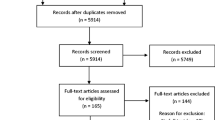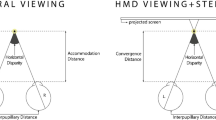Abstract
Virtual Reality (VR) has been applied in training programs in the areas of security and defense, with simulators evolving from basic shooting systems into more immersive situations. In spite of all the efforts that have already been invested into research and development initiatives for such simulators, there are further challenges yet to be overcome. These include new devices of interaction and training modules that enable the recreation of security routines situations, as well as the creation of educational methods using simulation. The main contribution of this paper is mapping the state-of-the-art of VR simulators used on training of security agents and identifying which of them presents some kind of automated or semi-automated performance analysis, as well as research studies with simulators based on different techniques (immersive and non-immersive system). Upon completion of a systematic literature review, the authors detected certain gaps and challenges, such as the complete absence of information about educational methods used in simulation training and the lack of automatic users’ assessments. The assessment systems detected were mainly for gunshot, while a posture assessment system has not been detected. So, it is possible to conclude that the creation of automated evaluation systems with the use of VR simulators remains as a challenge yet to be tackled.







Similar content being viewed by others
References
Afonso MB, Bergamasco LCC, Nunes FLS. Implementação de técnicas de estereoscopia em aplicações de realidade virtual: uma Revisão sistematica
Anjos AM, Tori R (2012) Avaliação de habilidade sensório-motoras em ambientes de realidade virtual para treinamento médico:uma revisão sistemática. 4(1):28–34
Barles J, Dras M, Kavakli M, Richards D, Tychsen A. An Overview of Training Simulation Research and Systems
Bogatinov D, Lameski P, Trajkovik V, Trendova KM (2017) Firearms training simulator based on low cost motion tracking sensor. Multimed Tools Appl 76(1):1403–1418
Cárdenas-Delgado S, Loachamín-Valencia M, Calderón MP (2018) VR-System ViPoS: VR System with Visual and Postural Stimulation Using HMDs for Assessment Cybersickness in Military Personnel. In Developments and Advances in Defense and Security, pp. 71–84
Cientistas (2016) Available: www.tis.cientistas.com.br. [Accessed: 01-May-2017]
Coie P (2018) Augmented and virtual reality survey report. p. 21, Available: https://www.perkinscoie.com/images/content/1/8/v2/187785/2018-VR-AR-Survey-Digital.pdf [Accessed: 04-Apr-2018]
Dynamic Animation System, Inc. (2017) Available: http://www.d-a-s.com/VICE. [Accessed: 16-Apr-2017]
Emond B, Fournier H, Lapointe J-F (2010) Applying advanced user models and input technologies to augment military simulation-based training. Proc. 2010 Spring Simul. Multiconference - SpringSim ‘10, p. 1
Hall H (1990) System for Training and Evaluation of Security Personnel in Use of Firearms. patent number 4948371
Indra (2000) Available: http://www.indracompany.com/es/sistemas-entrenamiento. [Accessed: 17-Apr-2017]
Kingkangwan K, Chalainanont N, Kumsap C (2016) “Gun identification using image synchronization for DTI’s virtual shooting range”, 2016 2nd Asian Conf. Def Technol ACDT 2016:32–35
Koźlak M, Nawrat A, Kurzeja A (2014) Virtual Reality simulation technology for military and industry skill improvement and training programs. Szybkobieżne Pojazdy Gąsienicowe 2(35):5–12
Kwon B, Kim J, Lee S (2016) An enhanced multi-view human action recognition system for virtual training simulator. 2016 Asia-Pacific Signal Inf. Process. Assoc. Annu. Summit Conf., pp. 1–4
Kwon B et al (2017) Implementation of a Virtual Training Simulator Based on 360 ° Multi-View Human Action Recognition. IEEE Access 5:12496–12511
Labr M, Hagara L (2017) Open source possibilities of analyzing and measuring shooting skills. ICMT 2017 - 6th Int. Conf. Mil. Technol., pp. 61–65
Lee S, Park S, Chung K, Cho C (2015) Kinematic skeleton based control of a virtual simulator for military training. Symmetry (Basel) 7(2):1043–1060
A. J. M. Leite et al (2012) System model for shooting training based on interactive video, three-dimensional computer graphics and laser ray capture. Proc. - 2012 14th Symp. Virtual Augment. Reality, SVR 2012, pp. 254–260
Lele A (2013) Virtual reality and its military utility. J Ambient Intell Humaniz Comput 4(1):17–26
Manuel RUI, Silva DA (1999) A simulação como parte do treino operacional
Martono KT (2016) Shooting Simulator System Design Based on Augmented Reality, pp 377–382
Maxwell D, Oster E, Lynch S, Maxwell D, Oster E, Lynch S (2018) Evaluating the Applicability of Repurposed Entertainment Virtual Reality Devices for Military Training. ModSim 2018(0028):1–10
Meggit Training System (2017) Available: http://meggitttrainingsystems.com/Commercial-ranges/Commercial-simulation-equipment/FATS-L7. [Accessed: 10-Apr-2017]
Netto AV (2006) Development of a security training system based on interactive multimedia. Revista IEEE América Latina, São Paulo 4(5):379–384
Netto AV (2015) Application of interactive technology for training in the security area. 2015 XVII Symp. Virtual Augment. Real., pp. 127–132
Netto AV (2017) Desenvolvimento e implementação do protótipo de malha laser para simulador de treinamento na área de segurança. pp. 73–82
M. Oliveira (2016) Simulador de abordagem. FAPESP, pp. 70–71
Pinheiro EB, Gomes GAM, Antonio JML, Coutinho EF, Vidal CA, Neto JBC (2016) Requirements for Development of a Low Cost Portable Simulator for Shooting Skill Training. Proc. - 18th Symp. Virtual Augment. Reality, SVR 2016, pp. 234–238
Pizzol LD, De Santa UF (2014) O emprego da Realidade Virtual no treinamento policial para o enfrentamento de criminosos com ênfase nos chamados encontros mortais: Uma abordagem baseada na Teoria Geral de Sistemas, pp. 1–146
Pollock B, Winer E, Gilbert S, de la Cruz J (2012) LVC interaction within a mixed-reality training system. Proc SPIE 8289:82890K–82890K–10
Rankis I, Kiploks J, Vjaters J (2008) Shooting Simulator System. 8(8):1–6
SCATT Shooter Training Systems (2018) Available: http://www.scatt.com/. [Accessed: 24-Nov-2017]
Shumaker R, Lackey S (2015) Augmented Reality Training of Military Tasks: Reactions from Subject Matter Experts. Lect. Notes Comput. Sci. (including Subser. Lect. Notes Artif. Intell. Lect. Notes Bioinformatics), vol. 9179
Soares S (2016) Creation , validation , and reliability of a shooting simulator instrument for reaction time evaluation. pp. 277–282
Soetedjo A, Ashari MI, Mahmudi A, Nakhoda YI (2013) Camera-based shooting simulator using color thresholding techniques. Proc. 2013 3rd Int. Conf. Instrumentation, Control Autom. ICA 2013, pp. 207–211
Soetedjo A, Mahmudi A, Ashari MI, Nakhoda YI (2015) Low cost shooting simulator based on a single board computer. Am J Appl Sci 12(2):130–141
Soetedjo A, Mahmudi A, Ibrahim Ashari M, Nakhoda YI (2014) Detecting laser spot in shooting simulator using an embedded camera. Int J Smart Sens Intell Syst 7(1):423–441
Soetedjo A, Nurcahyo E, Nakhoda YI (2011) Development of a cost-effective shooting simulator using laser pointer”, Proc. 2011 Int. Conf. Electr. Eng. Informatics, ICEEI 2011
Talhan A, Jeon S (2017) Pneumatic Actuation in Haptic-Enabled Medical Simulators: A Review. IEEE Access 4(c):1–1
Taylor GS, Barnett JS (2013) Evaluation of Wearable Simulation Interface for Military Training. Hum Factors J Hum Factors Ergon Soc 55(3):672–690
Teng Y, Zeng YB (2009) Application of UML in military communication simulation training system. 2009 Int. Conf. Signal Process. Syst. ICSPS 2009, pp. 38–41
Ti Training (2017) Available: http://www.titraining.com/. [Accessed: 16-Apr-2017]
Vieira dos Reis A, Gonçalves B, Santos Garci FL (2014) Um Estudo em Interfaces Tangiveis: Avaliação de Usabilidade de um Simulador de Armas de Fogo. Hum Factors Des:4–22
Villarejo CA, Juan MC, González C (2015) Simulador de Tiro con captura laser
VirTra (2018) Available: http://www.virtra.com/. [Accessed: 10-Apr-2017]
Wallace J, Kambouris S (2017) Realism in Modeling and Simulation with Implications for Virtual Reality, Augmented Reality, and Immersive Environments”, MODSIM World, pp. 42–48
Yoshida EA, Castro MLA, Martins VF (2017) Virtual Reality and Fetal Medicine – A Systematic Review
Zamboni AB, Thommazo AD, Hernandes ECM, Fabbri SCPF (2010) StArt – Uma ferramenta para apoio ao processo de revisão sistemática”, Brazilian Conf. Softw. Theory Pract. - Tools Sess., p. 2005
Acknowledgments
Romero Tori would like to acknowledge CNPq (process 311991/2015-7) for its support.
Author information
Authors and Affiliations
Corresponding author
Additional information
Publisher’s note
Springer Nature remains neutral with regard to jurisdictional claims in published maps and institutional affiliations.
Rights and permissions
About this article
Cite this article
de Armas, C., Tori, R. & Netto, A.V. Use of virtual reality simulators for training programs in the areas of security and defense: a systematic review. Multimed Tools Appl 79, 3495–3515 (2020). https://doi.org/10.1007/s11042-019-08141-8
Received:
Revised:
Accepted:
Published:
Issue Date:
DOI: https://doi.org/10.1007/s11042-019-08141-8




